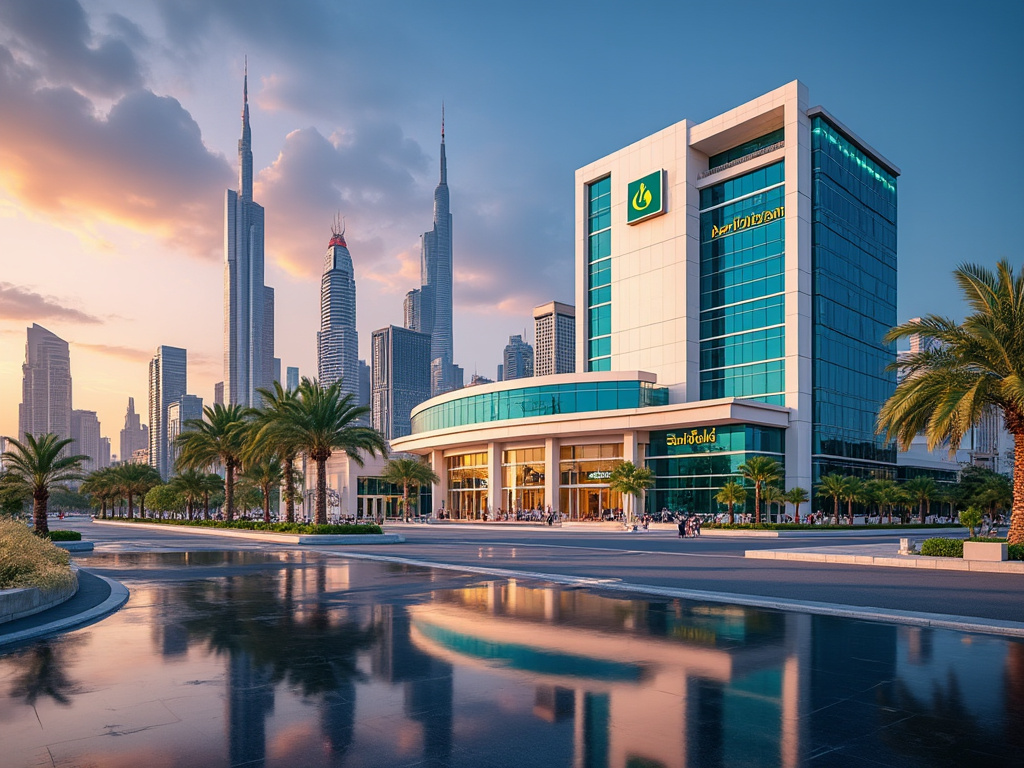
Islamic Banking Assets in the UAE Reach One Trillion Dirhams
The growth of Islamic banking in the UAE reflects significant increases in assets, investments, and funding over the past five years.
The United Arab Emirates (UAE) has constructed a favorable environment for the growth of Islamic banking over the past five years, resulting in an approximate 50% expansion of the overall asset and investment portfolio of these banks.
By the beginning of 2025, the total portfolio reached nearly one trillion dirhams, an increase of approximately 315 billion dirhams.
According to indicators from the Central Bank, Islamic banks accounted for 18.8% of the total asset and investment portfolio of all operating banks in the UAE as of this year.
Specifically, Islamic banks held a 17.6% share of the total assets of the country’s banks by January 2025. Over this five-year period, the assets of Islamic banks saw a growth of 40.3%, rising by 231 billion dirhams, with cumulative assets totaling 804 billion dirhams compared to slightly over 573 billion dirhams in the same period of 2020.
Islamic banks also constituted 21.6% of the total investments of all operating banks in the UAE, leading to a cumulative investment portfolio of 161 billion dirhams.
This marks a significant 112% increase compared to the investment figures from 2020.
Additionally, the Central Bank's data indicates a clear expansion in Islamic banking financing, which increased by 35.5% over the last five years.
An additional 130 billion dirhams in financing was provided since 2020, raising the cumulative financing total from 366 billion dirhams to 496 billion dirhams as of January 2025.
The credit extended by Islamic banks reached a share equivalent to 22.6% of the total banking financing available from all operating banks in the UAE by the end of January this year.
The private sector maintained its position as the largest beneficiary of financing from Islamic banks, with a total of 350 billion dirhams, representing 70.5% of the total financing extended by Islamic banks and operational units by the end of January this year.
Financing to the private sector rose by nearly 23%, as it received over 65 billion dirhams in new loans from Islamic banks over the past five years.
Among the private sector beneficiaries, resident individuals received the largest share, accounting for 38.5% of Islamic bank financing, which increased by 37.5% to around 52 billion dirhams since 2020.
Commercial institutions and industrial companies in the UAE followed, as the second largest beneficiaries, with a share of 32% of Islamic bank financing and a cumulative total of 158 billion dirhams by January 2025.
Conversely, total financing obtained by non-residents from UAE Islamic banks rose by more than 16.6 billion dirhams during the five years, marking a growth of 44.2%, increasing from a cumulative total of 37.5 billion dirhams in January 2020 to 54.1 billion dirhams in January 2025.
Customer confidence in the local Islamic banking market has also increased significantly, reflected in the cumulative deposits held by these banks, which grew by 44.5% over the past five years.
New deposits added 179 billion dirhams, lifting the total deposits in Islamic banks to 581 billion dirhams as of January this year, compared to a total of 402 billion dirhams in the same period of 2020.
By the beginning of 2025, the total portfolio reached nearly one trillion dirhams, an increase of approximately 315 billion dirhams.
According to indicators from the Central Bank, Islamic banks accounted for 18.8% of the total asset and investment portfolio of all operating banks in the UAE as of this year.
Specifically, Islamic banks held a 17.6% share of the total assets of the country’s banks by January 2025. Over this five-year period, the assets of Islamic banks saw a growth of 40.3%, rising by 231 billion dirhams, with cumulative assets totaling 804 billion dirhams compared to slightly over 573 billion dirhams in the same period of 2020.
Islamic banks also constituted 21.6% of the total investments of all operating banks in the UAE, leading to a cumulative investment portfolio of 161 billion dirhams.
This marks a significant 112% increase compared to the investment figures from 2020.
Additionally, the Central Bank's data indicates a clear expansion in Islamic banking financing, which increased by 35.5% over the last five years.
An additional 130 billion dirhams in financing was provided since 2020, raising the cumulative financing total from 366 billion dirhams to 496 billion dirhams as of January 2025.
The credit extended by Islamic banks reached a share equivalent to 22.6% of the total banking financing available from all operating banks in the UAE by the end of January this year.
The private sector maintained its position as the largest beneficiary of financing from Islamic banks, with a total of 350 billion dirhams, representing 70.5% of the total financing extended by Islamic banks and operational units by the end of January this year.
Financing to the private sector rose by nearly 23%, as it received over 65 billion dirhams in new loans from Islamic banks over the past five years.
Among the private sector beneficiaries, resident individuals received the largest share, accounting for 38.5% of Islamic bank financing, which increased by 37.5% to around 52 billion dirhams since 2020.
Commercial institutions and industrial companies in the UAE followed, as the second largest beneficiaries, with a share of 32% of Islamic bank financing and a cumulative total of 158 billion dirhams by January 2025.
Conversely, total financing obtained by non-residents from UAE Islamic banks rose by more than 16.6 billion dirhams during the five years, marking a growth of 44.2%, increasing from a cumulative total of 37.5 billion dirhams in January 2020 to 54.1 billion dirhams in January 2025.
Customer confidence in the local Islamic banking market has also increased significantly, reflected in the cumulative deposits held by these banks, which grew by 44.5% over the past five years.
New deposits added 179 billion dirhams, lifting the total deposits in Islamic banks to 581 billion dirhams as of January this year, compared to a total of 402 billion dirhams in the same period of 2020.











